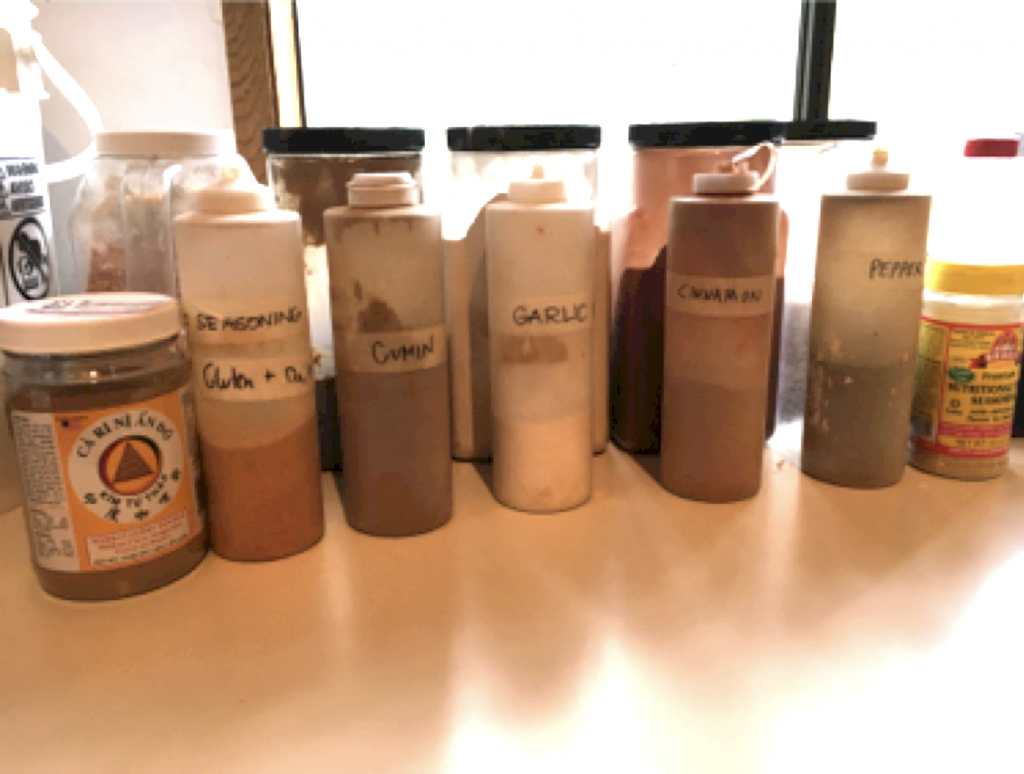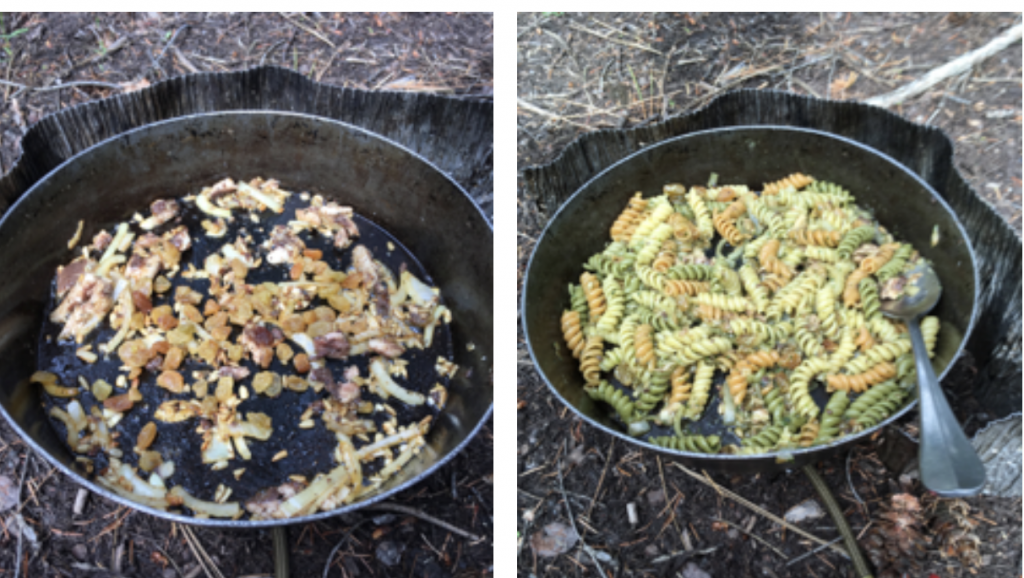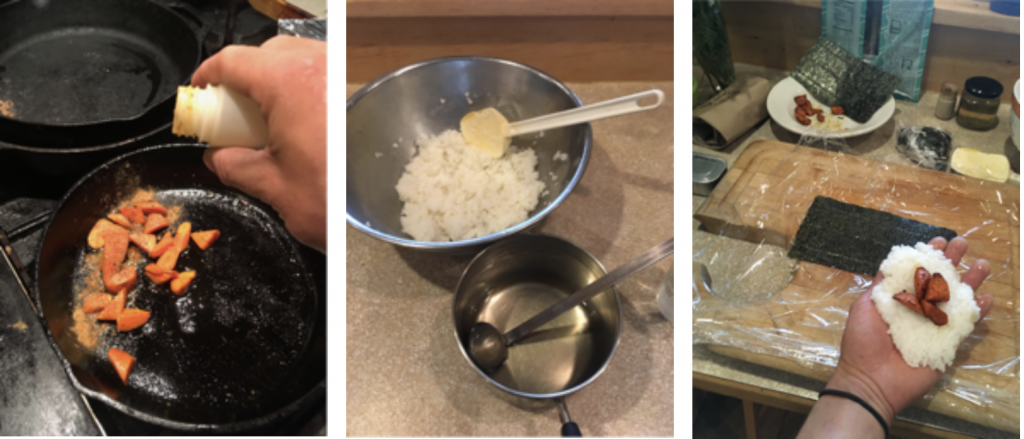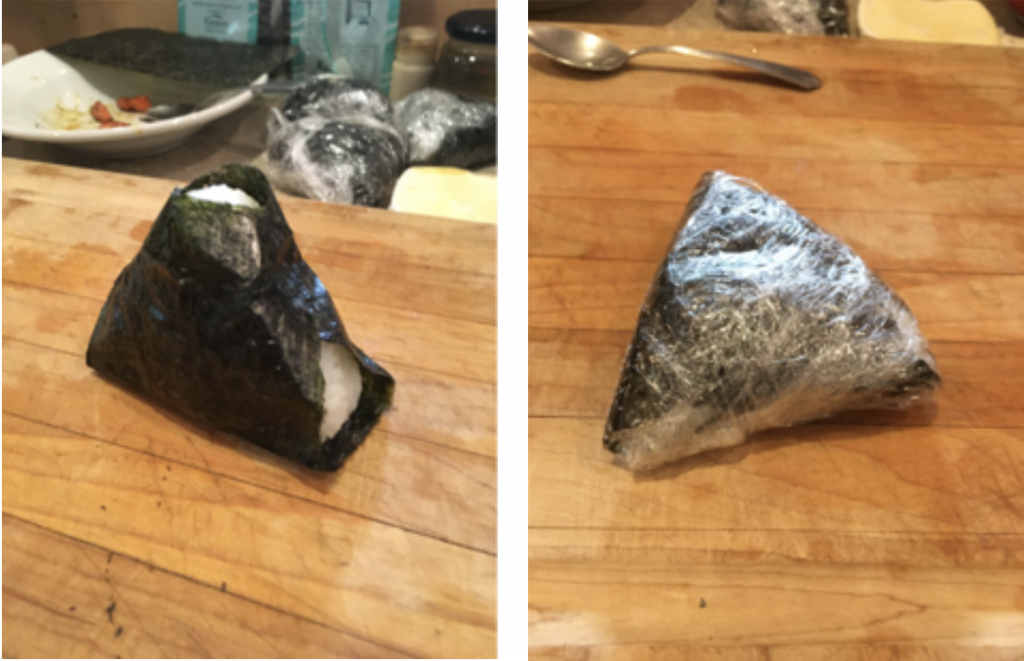This post was originally published on June 14, 2018, and updated on February 23, 2021.
Food is an easy conversation starter among fellow adventurers—sharing dishes and traditions and cooking together is a bonding experience. If you have your backcountry staples but are looking for something new to try, I’ve provided a few trusted tips and recipes for your next outdoor adventure.
#1: Create a Personalized Backcountry Spice Kit
As a climber and backpacker, keeping my pack light allows me to move fast and conserve energy in the long run. Unfortunately, this can limit the types of ingredients brought out into the field. I personally struggle balancing food volume and bulk with satisfying flavors and calorie consumption needed to maintain energy. I’ve found that creating and bringing a personalized spice kit can be an easy, lightweight solution to develop full flavor into my basic backcountry staples.
First I find it extremely important to bring enough salt and pepper. Next, I add in other spices such as curry, taco mix, cumin, garlic, cinnamon, chili and nutritional yeast depending on the meals I plan to make. Bringing a small bottle of each spice is an extremely great tradeoff in flavor to weight. I personally like to mix all the spices together into one bottle for efficiency and minimalism. The downside is the lack of variability of flavors between meals.
My spice bottle includes cumin, chili, curry and chicken bouillon.

Bringing a small bottle of mixed spices is an extremely great tradeoff in flavor to weight to help keep your pack light. Photo courtesy of Ken Soo.
#2: Dehydrate and Grind Vegetables for Stronger Flavor
Another way I’ve found to add flavor to my backcountry meals is by grinding dehydrated mushrooms in a coffee grinder to add to my spice blend. It’s light and flavorfully potent. You can mix this with water as an easy way to make mushroom broth for a cold day.
If you’re vegetarian, using ground-dried mushrooms is a great option to get umami into your palette. Umami is a Japanese term that is often described as savoriness. Tomatoes also have umami.
#3: Try Sardine Pasta—Yup, You Read That Right
Here is a simple pasta recipe of a Mediterranean flair that can be easily modified to your dietary restrictions. Most of its ingredients are suitable for backpacking and multiple days in the backcountry.
I am also going to introduce the technique of aromatizing your spices by pan-frying them in oil before or while adding your other ingredients. One of my chef mentors told me “no color, no flavor” and I’ve stuck to that philosophy. By browning and caramelizing the sugars in produce, it creates a much more complex flavor.
Ingredients
- Dry Pasta
- Canned Sardines
- Garlic
- Chili Powder
- Dried Basil
- Onion
- Sunflower Seeds
- Raisins
- Grapenuts (or another crunchy topping equivalent)
- Pesto Seasoning Mix
Optional ingredients to add: sun-dried tomatoes, olives, arugula, lemon
Steps
- Boil pasta
- While pasta is boiling, start pan-frying the garlic and onion
- Once the onion is translucent, add the chili powder and dried basil and fry until aromatic
- Add the sunflower seeds, raisins, and sardines until the seeds have color
- Add the cooked pasta and pesto seasoning mix to the fried ingredients
- Feel free to use the oil from the can of sardines to add flavor
- Stir and top off with grape nuts
- Enjoy!

Sardine pasta is a meal suitable for backpacking and multiple days in the backcountry. Photo courtesy of Ken Soo.
#4: Onigiri, a Portable Lunch That Packs a Punch
Onigiri are Japanese rice balls with various fillings: pickled veggies, salmon or nothing at all! Below is a recipe for curried carrot and sardine onigiri. These rice balls can be made beforehand and refrigerated. You can enjoy them for multiple days after, while camping or in the backcountry. They are handheld and easy to eat while you’re on the move.
Ingredients
- Short-grain Japanese Rice
- Rice Vinegar
- Sugar
- Salt
- Seaweed
- Carrots
- Personalized Spice Bottle
- Sardines (optional)
Steps
- Cook the sushi rice, then cool to room temperature
- While rice is cooking, measure a 6:3:1 ratio of rice wine vinegar, sugar, and salt; then, boil all these ingredients together until dry ingredients are dissolved into rice wine vinegar
- Sautee carrots with your personalized spice mixture until al dente
- When rice is room temp, sprinkle vinegar solution over rice until it is seasoned to your liking. I find that after the rice is cold, it is not as vinegary to taste. So, you might want to over-season a touch.
- Have a bowl of water to the side and dip your hands in the water, this prevents rice from sticking to your hand while you handle the rice
- Grab some seasoned rice with your hand and flatten
- Place some sautéed carrots (or whatever your desired stuffing) is into the rice and ball it up
- Wrap with seaweed then with plastic film
- Make as many as you desire!

Pictured here is the process of making onigiri, or Japanese rice balls. Photo courtesy of Ken Soo.

Onigiri is great for a portable lunch. Photo courtesy of Ken Soo.
Are you hungry yet? When you learn a few tricks and try new things when cooking, you will find your meal in the backcountry to be a rewarding experience.
Find more backcountry recipes here to spice up your next adventure.
About the Author
Ken Soo previously worked as a logistics coordinator at the Northwest Outward Bound School in Mazama, WA. He was born in Kuala Lumpur, Malaysia and grew up in Singapore and Katy, Texas. Ken has a degree in Engineering and has worked professionally in kitchens for the past several years.




